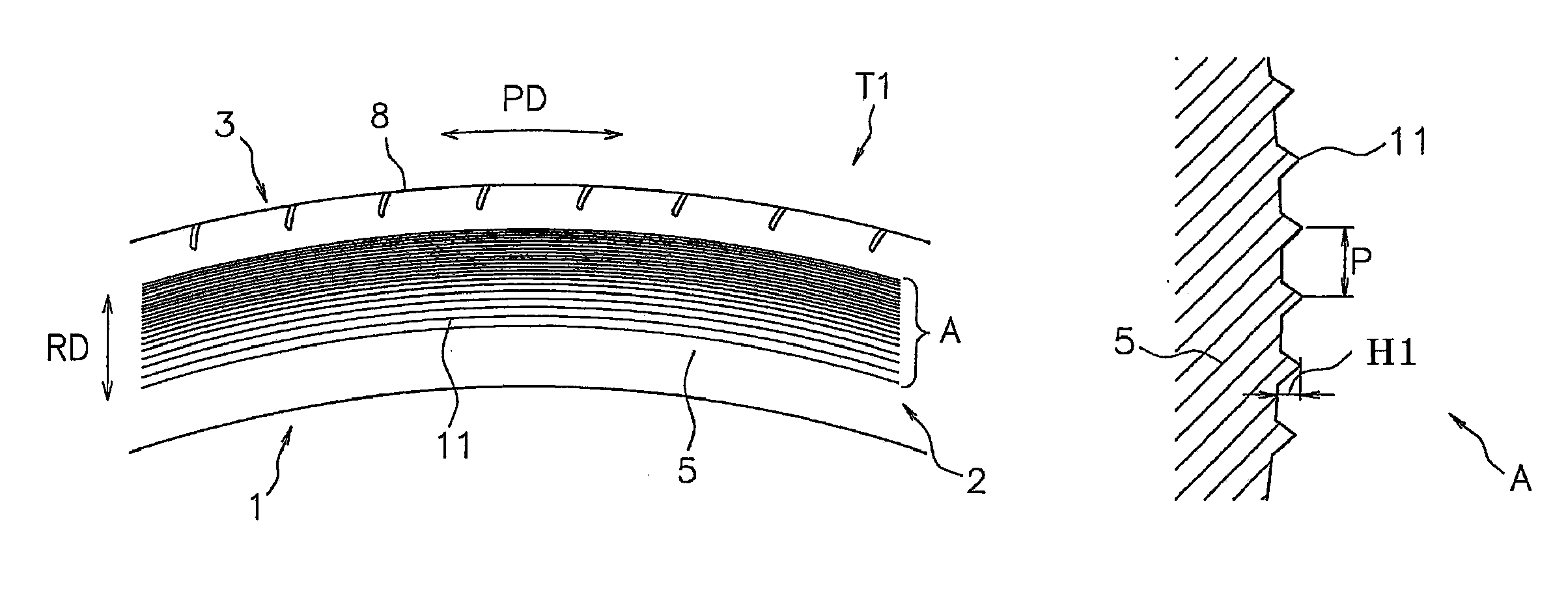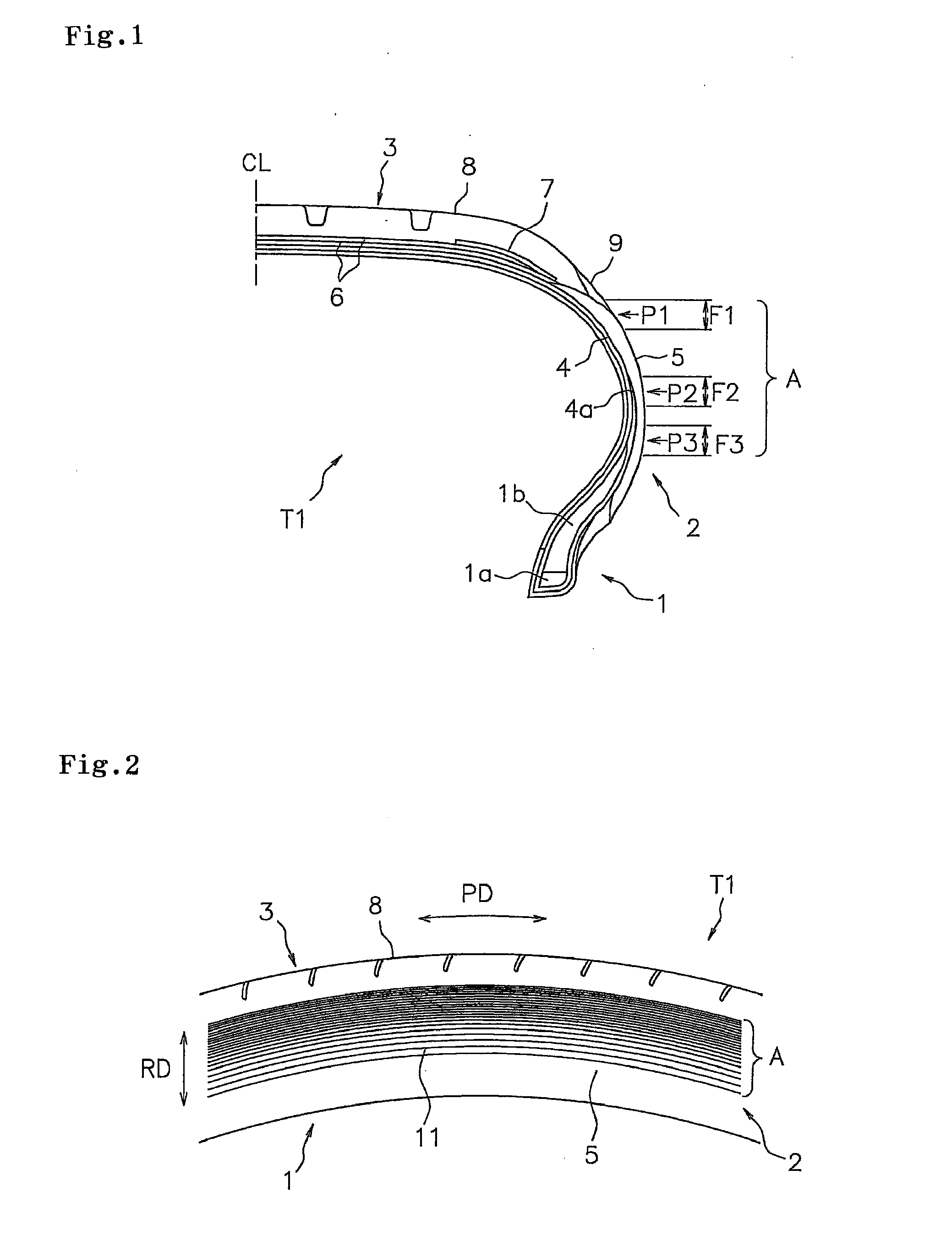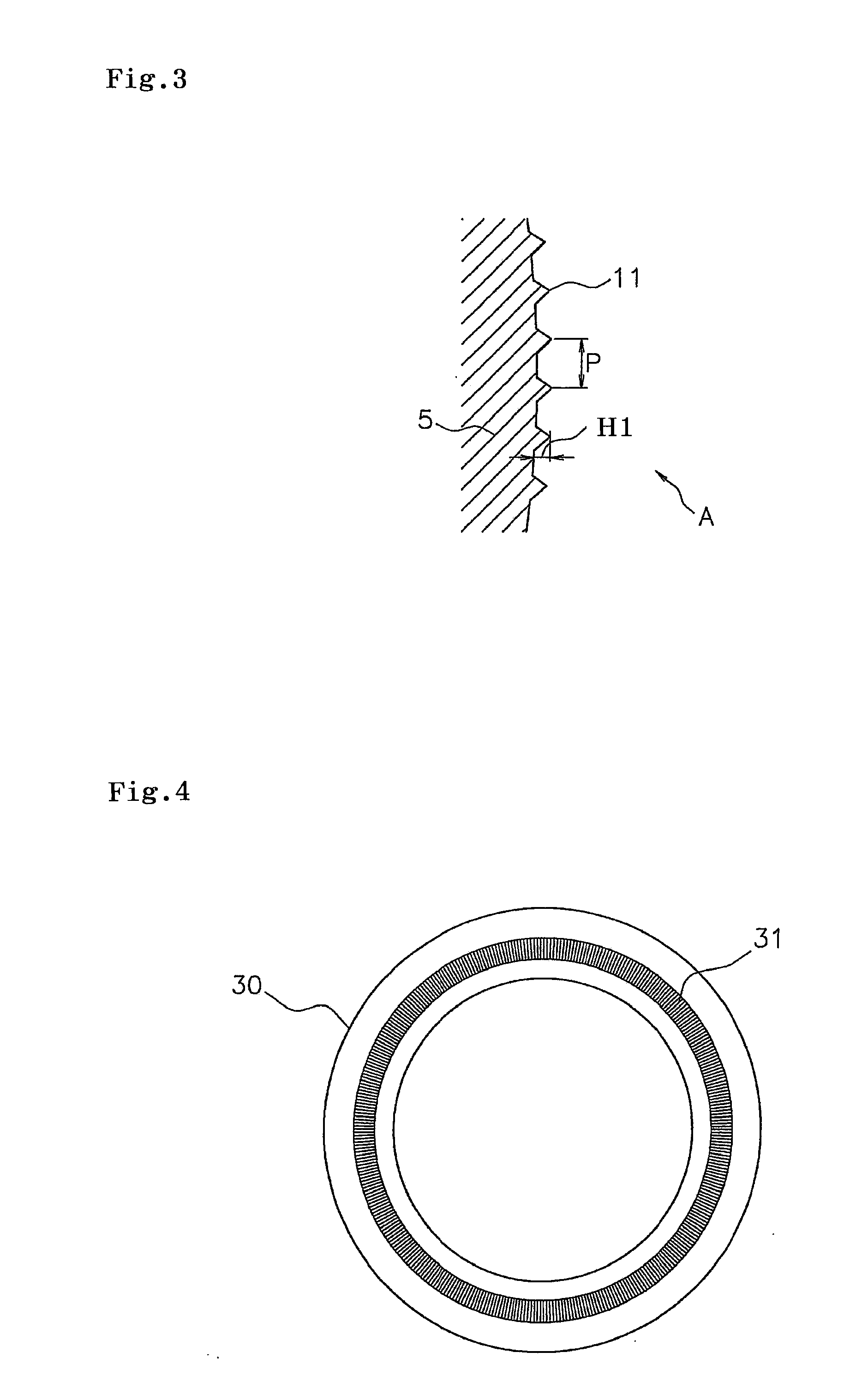Pneumatic Tire
- Summary
- Abstract
- Description
- Claims
- Application Information
AI Technical Summary
Benefits of technology
Problems solved by technology
Method used
Image
Examples
example 1
[0061]As shown in FIG. 7, the outer surface of the side wall portion was provided with the concavo-convex region formed by arranging a lot of projecting lines extending in the tire circumferential direction in parallel in the tire diametrical direction, and the arranged density of the projecting lines became larger toward the outer side in the tire diametrical direction. The concavo-convex region was intermittently provided along the tire circumferential direction, and the opening angle thereof was set within 45°. The size of the concavo-convex region and the height and the cross sectional shape of the projecting line were set to the same as the comparative example 2. The pitch of the projecting lines was set between 0.8 and 1.0 mm in the region F1, between 1.0 and 2.0 mm in the region F2, and between 2.0 and 3.0 mm in the region F3.
example 2
[0062]As shown in FIG. 8, the outer surface of the side wall portion was provided with the concavo-convex region formed by arranging a lot of projecting lines extending in the tire circumferential direction in parallel in the tire diametrical direction, and the arranged density of the projecting lines became larger toward the outer side in the tire diametrical direction. Further, the concavo-convex regions were intermittently provided along the tire circumferential direction, and the opening angle thereof was set so as to exceed 45°. The size of the concavo-convex region and the height, the cross sectional shape and the pitch of the projecting line were set to the same as the example 1.
example 3
[0063]Example 3 was structured in the same manner as the example 1 except the matter that the concavo-convex region is continuously provided annularly along the tire circumferential direction as shown in FIG. 9. Results of the evaluation are shown in Table 1.
TABLE 1Working timeof projectingGenerating condition of lightline (Hr / bothRegion F1Region F2Region F3faces)ComparativeLarge: 4Middle: 2Small: 1 2.0 hoursexample 1ComparativeMiddle: 2Small: 1None28.0 hoursexample 2ComparativeNoneNoneNone76.0 hoursexample 3Example 1Very small: 1NoneNone10.0 hoursExample 2NoneNoneNone12.0 hoursExample 3Small: 2Very small:None15.0 hours1
[0064]As shown by the results of Table 1, in the examples 1 to 3, it is possible to prevent the light from being generated in the side wall portion in comparison with the others. The light in the example 3 is generated in the region between the concavo-convex regions, and the light is not generated in the concavo-convex region. In the comparative example 3, a lot of ...
PUM
 Login to View More
Login to View More Abstract
Description
Claims
Application Information
 Login to View More
Login to View More - R&D
- Intellectual Property
- Life Sciences
- Materials
- Tech Scout
- Unparalleled Data Quality
- Higher Quality Content
- 60% Fewer Hallucinations
Browse by: Latest US Patents, China's latest patents, Technical Efficacy Thesaurus, Application Domain, Technology Topic, Popular Technical Reports.
© 2025 PatSnap. All rights reserved.Legal|Privacy policy|Modern Slavery Act Transparency Statement|Sitemap|About US| Contact US: help@patsnap.com



